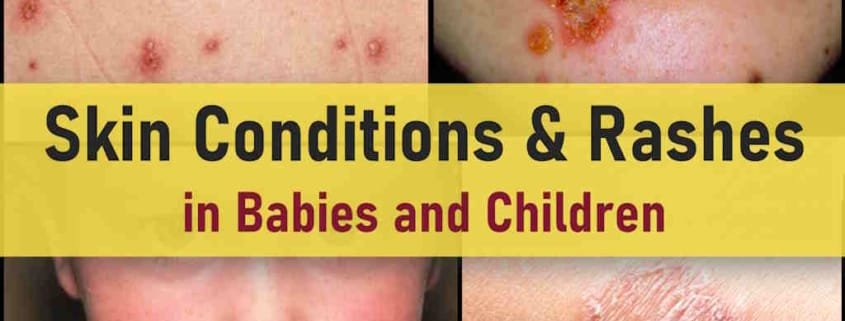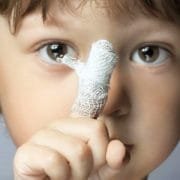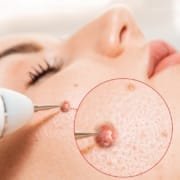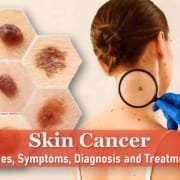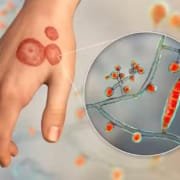Common Skin Conditions & Rashes in Babies and Children
Babies and young children frequently experience skin rashes due to their sensitive skin and developing immune systems. These rashes can arise from a variety of causes, including irritants, infections, or underlying health conditions. While most skin rashes in children are minor and easily treatable, some may require medical attention to prevent discomfort and avoid potential complications. Recognizing and understanding these conditions can help parents provide proper care and alleviate discomfort. Always consult a healthcare provider for an accurate diagnosis and guidance.
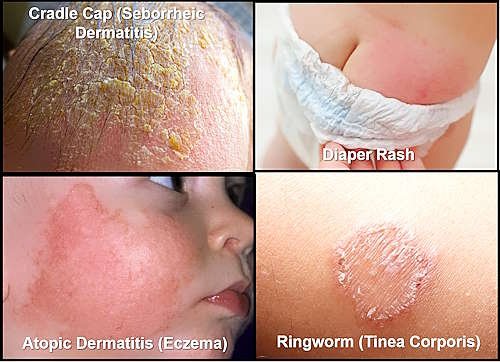
Diaper Rash (Diaper Dermatitis)
Diaper rash is a common condition that causes a bright red irritation on an infant’s skin in areas that come into contact with a soiled diaper. This rash develops when moisture from urine or stool irritates the skin. In some cases, a fungal infection (Candida) may cause a distinct bright red rash with small red spots in the skin folds. The best way to manage diaper rash is to change diapers frequently, keep the area dry, and apply a barrier cream like zinc oxide or petroleum jelly. For Candida infections, an antifungal cream may be required.
Cradle Cap (Seborrheic Dermatitis)
Cradle cap appears as a crusty, yellowish rash on an infant’s scalp and sometimes in skin folds. The exact cause is unknown, though it may be linked to excess oil production. This harmless condition usually clears up on its own by six months of age. Gently massaging mineral oil into the scalp and using a soft brush can help remove scales, while regular shampooing keeps the area clean. For more persistent cases, a mild corticosteroid cream may be recommended by a healthcare provider.
Atopic Dermatitis (Eczema)
Eczema is a chronic condition that causes dry, itchy, and inflamed skin, often affecting areas like the face, elbows, and knees. Triggers can include allergens, irritants, or dry climates. Treatment typically involves keeping the skin moisturized, using gentle cleansers, and applying topical corticosteroids to reduce inflammation during flare-ups. Avoiding known irritants and allergens can also help in managing eczema.
Ringworm
Despite its name, ringworm is not caused by a worm but by a fungus that lives on dead skin tissue. It presents as a red, scaly patch or bump that forms an itchy red ring with raised, blistery, or scaly borders. The infection spreads through direct contact with an infected person or animal or by sharing items like towels or sports gear. Treatment includes applying over-the-counter or prescription antifungal creams, and hygiene measures like avoiding shared personal items help prevent spreading.
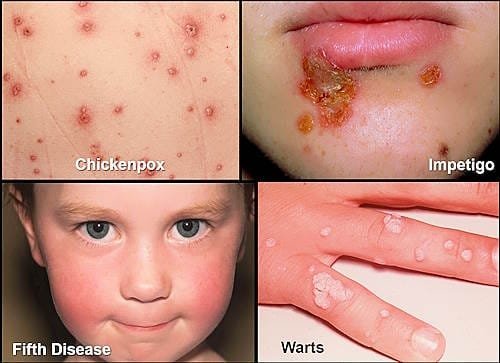
Fifth Disease
Fifth disease is a viral infection that typically affects young children and begins with flu-like symptoms. A bright red “slapped cheek” rash appears on the face, often followed by a body rash. Spread by respiratory droplets, this mild infection usually resolves on its own within a couple of weeks with rest, fluids, and pain relievers (avoiding aspirin for children). Pregnant women who are exposed to fifth disease should consult their healthcare provider for advice.
Chickenpox
Once a common childhood illness, chickenpox has become less prevalent due to vaccinations. This highly contagious virus causes an itchy rash with red spots or blisters that appear all over the body. The rash progresses through stages: blistering, bursting, drying, and crusting. Vaccination is the best prevention against chickenpox, and treatment includes managing itching, maintaining hydration, and seeking medical advice in severe cases.
Impetigo
Impetigo is a bacterial skin infection that results in red sores or blisters, often around the nose and mouth, which can break open, ooze, and form a yellow-brown crust. It spreads easily through close contact or shared items like towels. Scratching can lead to the infection spreading to other areas of the body. Treatment typically includes antibiotic ointment or oral antibiotics to clear the infection and reduce the risk of spread.
Warts
Warts are small, rough skin growths caused by a virus. They are generally harmless but can spread through skin contact or shared items. To prevent warts from spreading, children should avoid picking at them and keep them covered with bandages. A doctor can remove warts through treatments like freezing (cryotherapy).
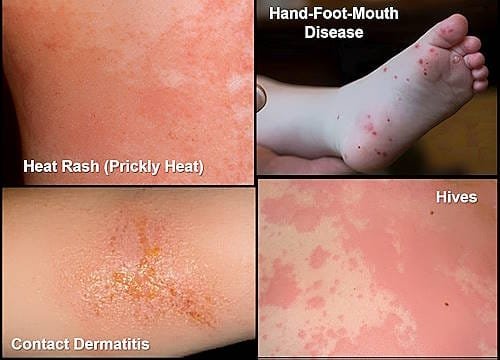
Heat Rash (Prickly Heat)
Heat rash, or prickly heat, results from blocked sweat ducts, causing small red or pink pimples, typically on the head, neck, and shoulders. Dressing babies in light layers and keeping them cool can help prevent heat rash. In most cases, the rash resolves on its own as the skin cools.
Contact Dermatitis
Contact dermatitis occurs when the skin reacts to an irritant or allergen, like certain foods, soaps, or plants such as poison ivy. The rash usually appears within 48 hours after exposure and may range from mild redness to larger blisters. Treatment typically involves avoiding the trigger and using hydrocortisone cream to reduce inflammation and discomfort.
Hand-Foot-Mouth Disease (Coxsackie)
This common viral illness presents with fever, mouth sores, and a non-itchy rash on the hands, feet, and sometimes buttocks. It spreads through respiratory droplets or contact with infected surfaces. While the illness generally resolves within a week, frequent hand washing can prevent its spread.
Hives
Hives appear as itchy, raised welts and can be triggered by food, medications, heat, or infections. They usually disappear within a few hours or days. Over-the-counter antihistamines can help reduce itching, but serious cases accompanied by swelling or difficulty breathing require emergency medical care.
Scarlet Fever
Scarlet fever is a bacterial infection associated with strep throat, leading to a red, sandpaper-like rash, fever, and sore throat. Antibiotic treatment is necessary, as scarlet fever can spread through respiratory droplets. Prompt medical attention can prevent complications and hasten recovery.
Roseola (Sixth Disease)
Roseola is a mild viral illness common in young children. It begins with a sudden high fever, which may cause seizures, followed by a pink rash once the fever subsides. The rash usually starts on the torso and spreads. Most cases resolve on their own, with symptom management through rest and fluids.
Molluscum Contagiosum
Molluscum contagiosum is a viral infection causing clusters of small, firm, raised spots on the skin. It spreads through close contact and is common in young children, though adults are generally resistant. The condition is often painless, and the rash typically resolves without treatment, although some cases may require medical attention if itching or irritation occurs.
Cellulitis
Cellulitis is a bacterial infection affecting the deeper layers of skin, characterized by redness, swelling, and warmth. It often appears on the legs but can develop anywhere on the body. If left untreated, cellulitis can become serious. Seek immediate medical care if cellulitis symptoms are present.
Measles
Measles is a highly contagious viral infection, now rare in many countries due to widespread vaccination. Symptoms include a high fever, cough, and a rash of red-brown blotches that spread from the face downward. Vaccination is the best prevention, and measles requires supportive care to manage symptoms.
Scabies
Scabies is a highly contagious skin condition caused by tiny mites that burrow into the skin, triggering an immune response. In children, scabies is commonly spread through prolonged skin-to-skin contact, such as during close play or hugging with an infected individual. Symptoms of scabies in children include small, red blotches, which may appear as raised, itchy bumps. These are often located on the palms of the hands or the soles of the feet. In infants, blisters are frequently found on the soles of the feet. Scabies can cause intense itching, especially at night, which can lead to scratching and secondary skin infections.
Treatment usually involves prescribed topical medications to kill the mites. Additionally, all household members may need treatment to prevent reinfestation, as the mites can live briefly on clothing and bedding
Frequently Asked Questions (FAQs)
What should I do if my child has a persistent rash?
If your child’s rash does not improve with home care or becomes worse, consult a healthcare provider. Persistent rashes can indicate underlying health issues or infections that require medical treatment.
Are skin rashes in children contagious?
Some rashes, like chickenpox, fifth disease, and impetigo, are contagious and can spread through direct contact or respiratory droplets. Others, like eczema or cradle cap, are not contagious. Always check with a healthcare provider for proper guidance.
How can I prevent skin rashes in my child?
Maintaining good hygiene, using gentle skincare products, keeping the skin moisturized, and avoiding known irritants can help prevent rashes. For contagious conditions, avoid sharing personal items and ensure vaccinations are up-to-date.
Can allergies cause skin rashes in children?
Yes, allergies are a common cause of skin rashes in children, especially with conditions like eczema or hives. Identifying and avoiding allergens can help reduce flare-ups in children prone to allergic reactions.
How can I tell if a rash is serious?
Many rashes are harmless, but seek medical attention if the rash is accompanied by fever, difficulty breathing, swelling, or signs of infection like warmth, pain, or pus.
Conclusion
Understanding common skin conditions in children can help parents identify and manage rashes effectively. While most are harmless, some require medical attention. Early recognition and appropriate care can help alleviate discomfort and prevent complications. Always consult a healthcare provider if a rash worsens or presents with other concerning symptoms.

